
PPT Coastal erosion processes PowerPoint Presentation, free download ID2049508
Weathering is the process of disintegration of rock from physical, chemical, and biological stresses. Weathering is influenced by temperature and moisture (climate).. A conceptual diagram showing how weathering breaks down rocks and minerals; eventually, soil formation begins in place.
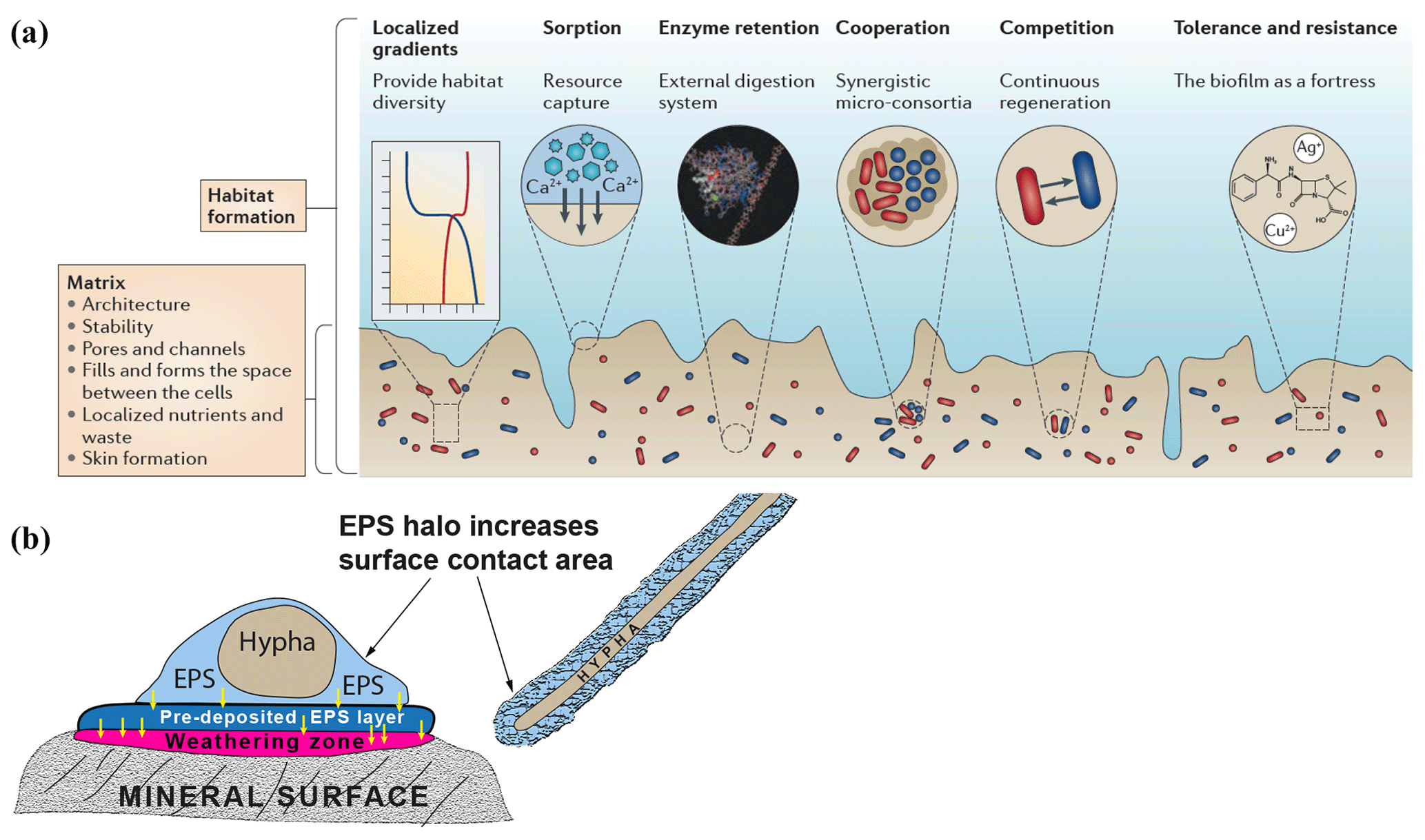
BG Reviews and syntheses Biological weathering and its consequences at different spatial
Biological Weathering is the term used to describe the tearing away of rock surface caused by animals and plants. Lichens (organisms comprised of fungi and algae), bacteria and mosses live on and feed on rocks constantly altering the structure of the rock.
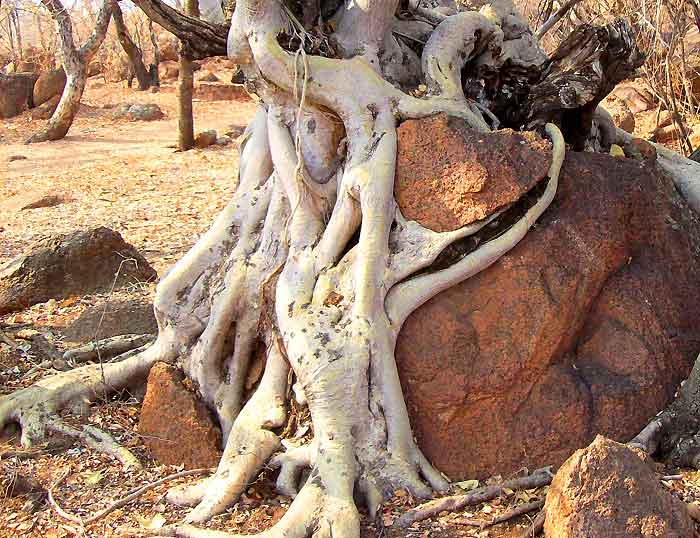
Biological Weathering Definition, Process, Types & Examples
Weathering involves physical and chemical processes that are modified by biological activity of plants, microorganisms and animals. This article reviews recent progress made in understanding biological processes contributing to weathering.
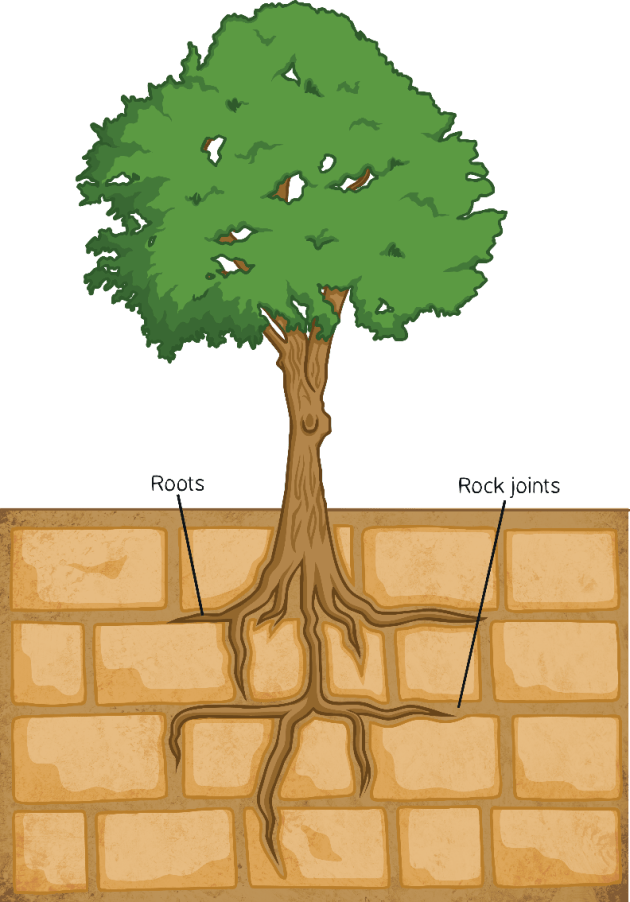
Freeze Thaw Weathering Geography Wiki Beyond Twinkl
Updated on February 11, 2019. Organic weathering, also called bioweathering or biological weathering, is the general name for biological processes of weathering that break down rocks. This includes the physical penetration and growth of roots and digging activities of animals ( bioturbation ), as well as the action of lichens and moss on.

BIOLOGICAL WEATHERING I Weathering Types I Weathering by living organisms II The Geographia
(1) Physical weathering, (2) Chemical weathering, and (3) Biological weathering or biogeochemical weathering. 1. Physical Weathering: Physical weathering of rocks is a mechanical process which is brought about by a number of factors, such as: ADVERTISEMENTS: (A) Temperature, (B) Water, (C) Wind. (A) Temperature:

Types Of Chemical Weathering Processes slide share
weathering , erosion and large earth movements. The rocks are gradually recycled over millions of years, changing between the different rock types. This recycling of rocks is a process called the.

How Does Biological Weathering Happen? HubPages
As its name suggests, biological weathering is a type of weathering brought about by various activities of living organisms.
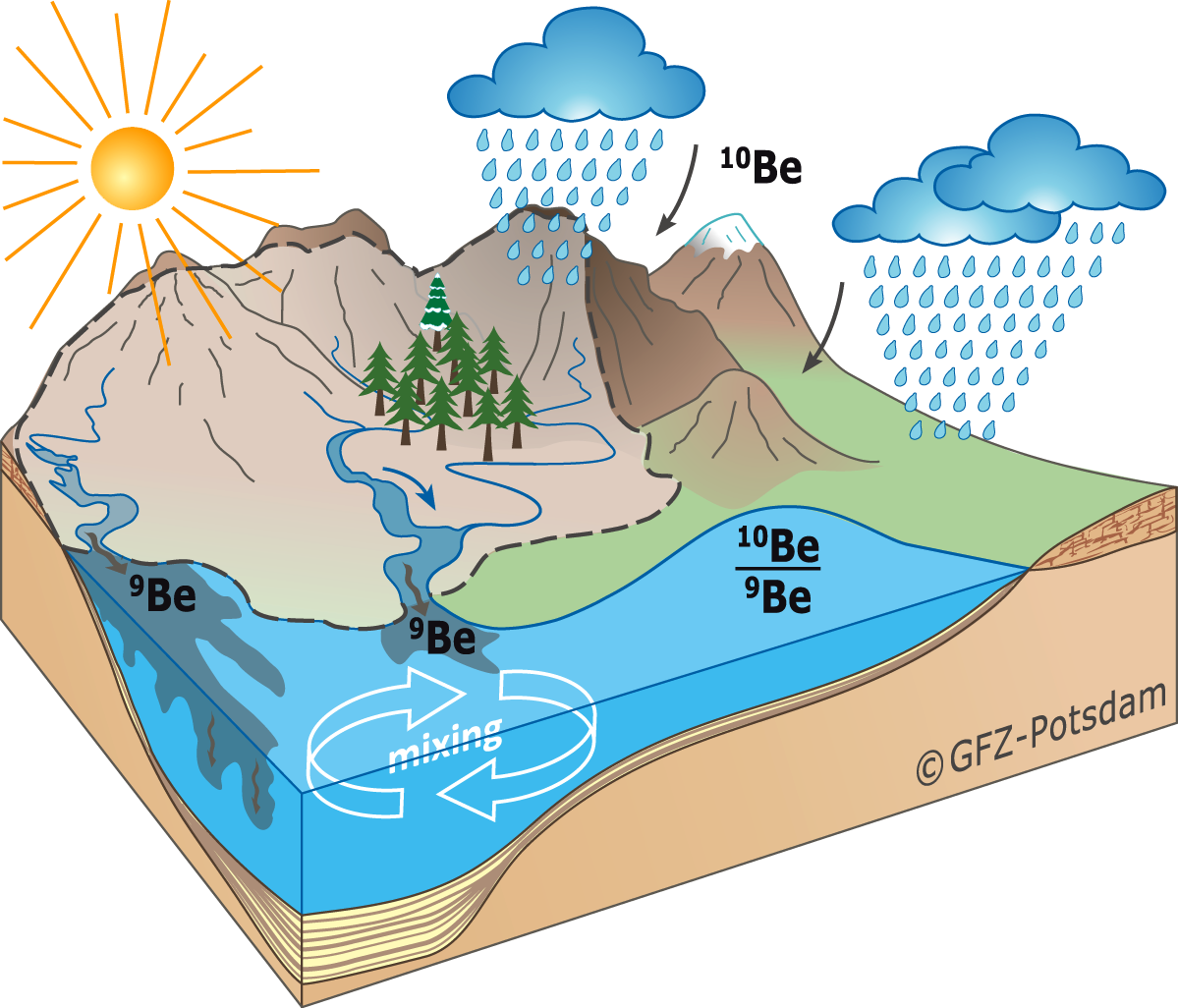
Weathering and river discharge surprisingly constant during Ice Age cycles
Biological Activity/Root Wedging: Weathering processes can happen due to the activity of living organisms. Burrowing animals can break rocks and stir sediments causing physical weathering. Animals that burrow can also bring fresh material to the surface where physical and chemical weathering can work more efficiently. Plant roots in search of.
/examples-of-chemical-weathering-607608_FINAL-54f8c4d63ed94e0eab454dc5e96cabff.png)
4 Types and Examples of Chemical Weathering
Biological Weathering. Living organisms contribute to the weathering process in many ways: Trees put down roots through joints or cracks in the rock in order to find moisture. As the tree grows, the roots gradually prize the rock apart. Many animals, such as these Piddock shells, bore into rocks for protection either by scraping away the grains.

Biological weathering Biological weathering, Plant roots, Animal action
There are three types of weathering: mechanical, biological, and chemical. Mechanical weathering is caused by wind, sand, rain, freezing, thawing, and other natural forces that can physically alter rock. Biological weathering is caused by the actions of plants and animals as they grow, nest, and burrow. Chemical weathering occurs when rocks.
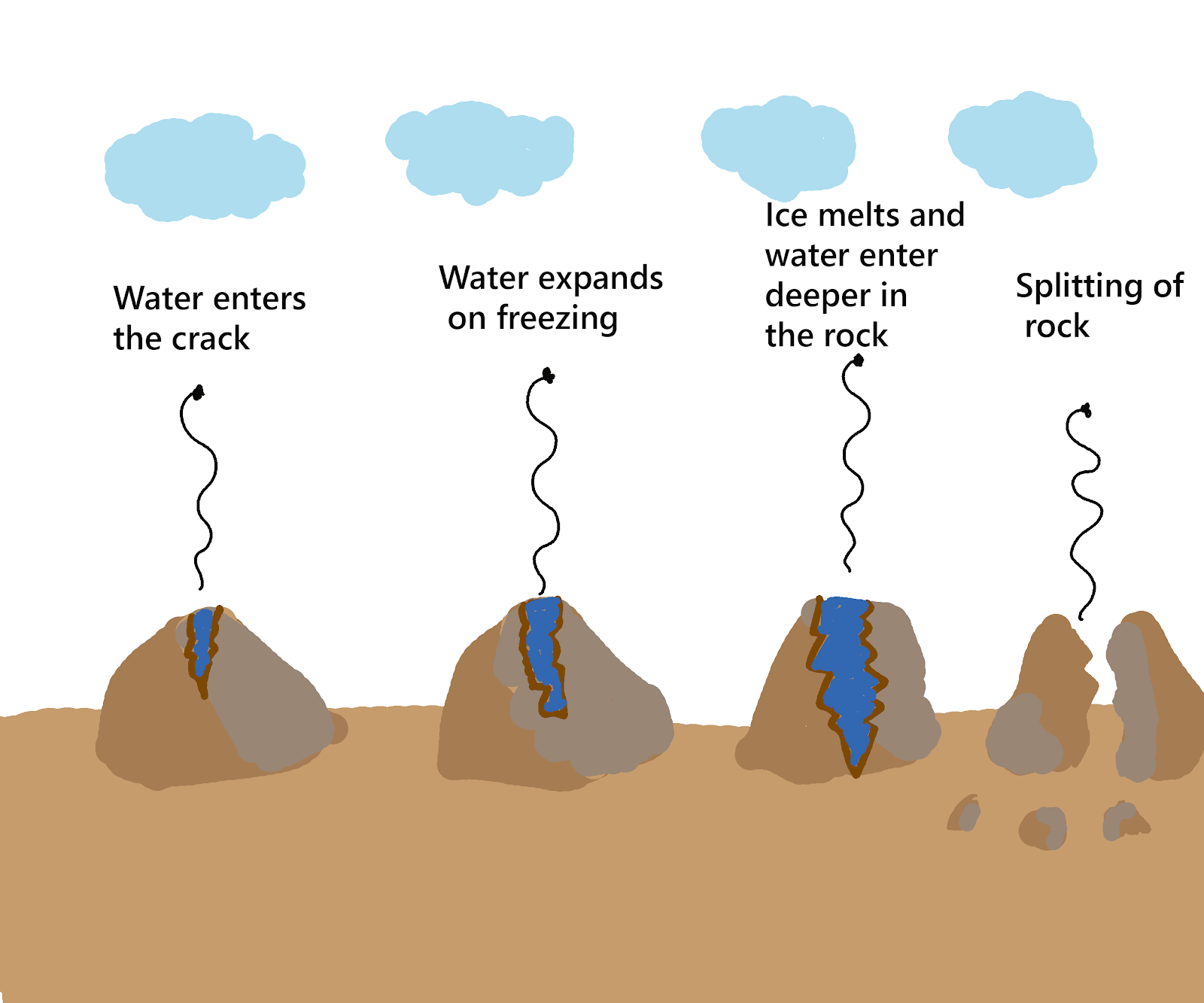
Coastal Transportation and Deposition GCSE Geography Revision Notes
Biological weathering. Plants and animals can also have an effect on rocks. Roots burrow down, weakening the structure of the rock until it breaks away.

BIOLOGICAL WEATHERING & ITS TYPES YouTube
The complete loss of particular atoms or compounds from the weathered surface. (2). The addition of specific atoms or compounds to the weathered surface. (3). A breakdown of one mass into two or more masses, with no chemical change in the mineral or rock. The residue of weathering consists of chemically altered and unaltered materials.

02 types of weathering
Last updated 22 Mar 2021 Share : Weathering is the breakdown of rocks in situ. There are three types of weathering; physical, chemical and biological. The rate that weathering occurs at will depend on the rock type, the climate and the relief. Physical weathering Physical weathering is also known as mechanical weathering.

Geology Chemical weathering, 6th grade science, Earth science
biological weathering root wedging animal burrowing. Frost Wedging A diagram displaying the steps of frost wedging One type of physical weathering is frost wedging. Frost wedging occurs when liquid water seeps into pores and small cracks in the earth and expands when it freezes. This causes the cracks to enlarge.
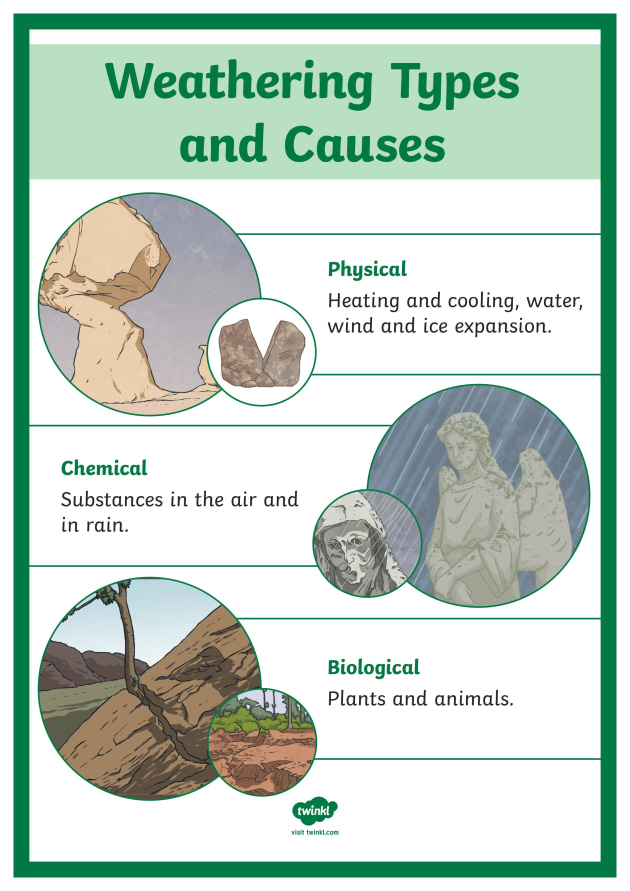
Freeze Thaw Weathering Geography Wiki Beyond Twinkl
Humans Biological Weathering Causes 1. Roots Of Plants Some trees grow inside of rocks, which aids in biological weathering. Roots of plants and trees delve into the soil in quest of moisture and nutrients. The joints or cracks in the rocks are traversed by the roots as they move through the soil, gradually rupturing the rock.

Weathering 8 8 0 Weathering Learning Intentions You
The carbon cycle is represented in the following diagram: To help us understand the carbon cycle, we can think of it as two interconnected subcycles: a biological carbon cycle and a geological carbon cycle. Biological carbon cycle